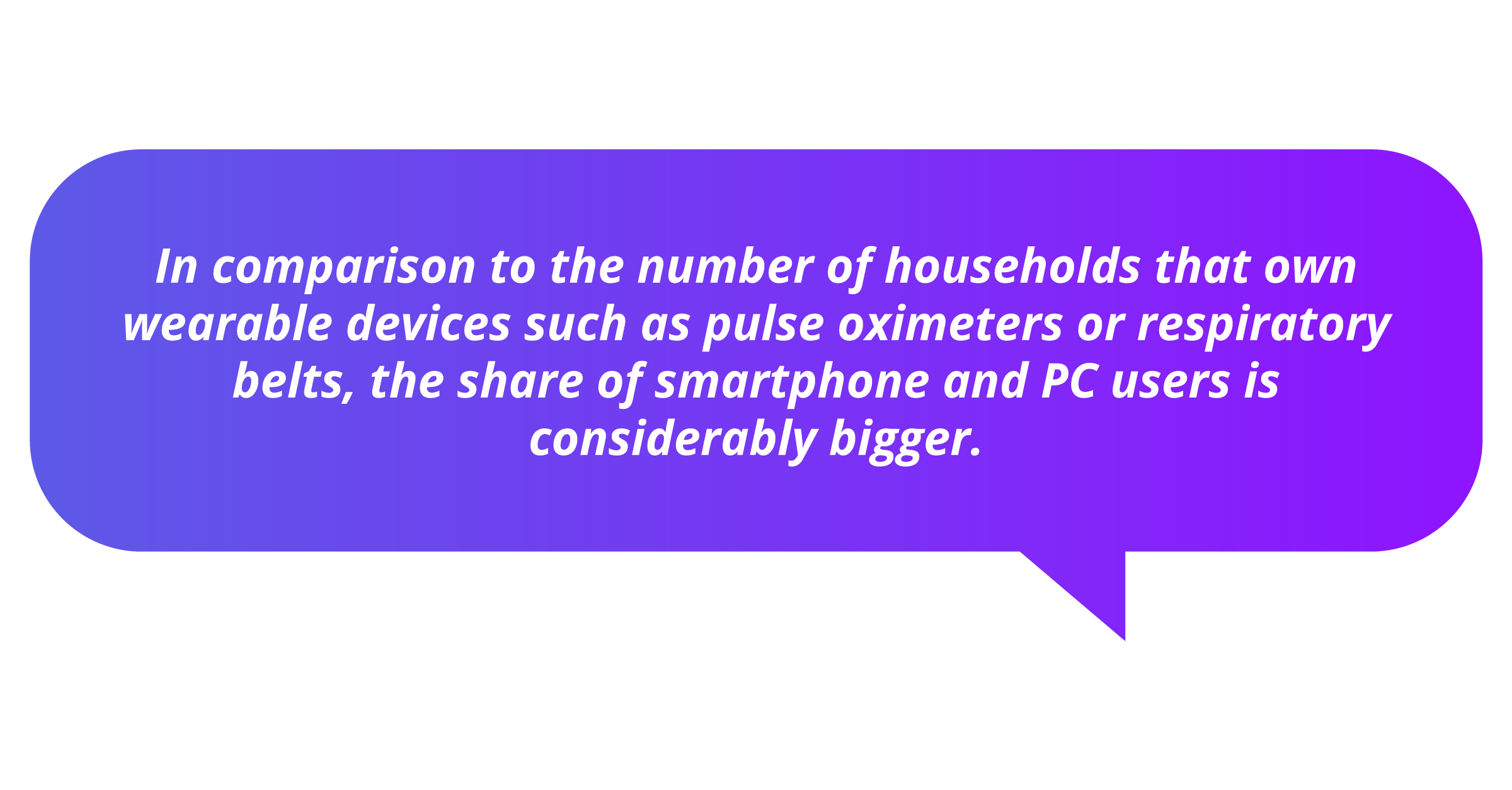Lead the Digital Health Revolution in Vital Signs Measurement
As health and technology have merged over the last few decades, therapy for health ailments is not just filling out a prescription for a certain drug. The latest “medicine” is digital.
In this new frontier known as digital therapeutics, there is significant promise shown with in-home digital therapeutic devices to positively impact patient health outcomes, especially with chronic disease prevention. This opens a vast landscape of opportunity within the healthcare and life science industries to make their mark.
One example of this phenomenon is the accurate measurement of vital signs outside of the clinical environment. There is industry awareness of the need and its potential for positively impacting a patient’s health. Telemedicine companies and healthcare organizations can implement vital signs measurement for regular remote checkups, simplifying data collection and storage while a patient is at home. Insurance companies can develop more functionality for the underwriting process. Well-being companies can develop apps that promote a healthy lifestyle, giving their users an opportunity to easily check personal vital signs from a mobile device.
So, with all its positives, why is this type of solution not more prevalent? The main problem among many companies is how to develop vital signs measurement functionality, do it fast and with accuracy, and make the process contactless and safe in post-COVID times, all while speeding up the R&D process.
To get a better understanding of what is possible with vital signs measurement, let us talk more about what they are, why they are important, and how they are currently measured.
Vital Signs
Heart rate and HRV - Heart rate has been documented to be altered because of systemic infection and correlated with its severity. Heart rate variability monitoring may enhance the early diagnosis, prognosis, and initiation of treatment of COVID-19 infection and other diseases. Athletes can also benefit from heart rate measurement to the training results and body functions during exercise.
Oxygen saturation - The blood oxygen level measurement is vital for monitoring people with chronic heart or lung problems. Oxygen saturation became essential during the COVID-19 pandemic as it is a good indicator of disease severeness. This vital sign cannot be measured manually, non-invasive pulse oximeters are commonly used for the task.
Respiratory rate - This vital sign is one of the most neglected in medicine due to the difficulty of measurement. The respiratory rate can be counted manually, which requires trained staff and in-person meetings with the patient. Dedicated devices such as a spirometer and respiratory belt are uncomfortable for the user and expensive to purchase for an ordinary patient. However, an abnormal respiratory rate (RR) can signify multiple diseases such as adverse cardiac events, pneumonia, and is sensitive to stressors, including emotional stress, cognitive load, heat, cold, physical effort, and exercise-induced fatigue.
Vital signs are key indicators of the human body’s vital (life-sustaining) functions. Taken to help assess the general physical health, they give a clue to diseases and show progress towards recovery. Most commonly, heart rate and respiratory rate are measured by counting. Such a manual approach requires special training and may cause errors if done incorrectly. Wearable devices are made to solve this problem with more precise vitals measurements (HR, RR, oxygen saturation). However, wearables have several disadvantages:
- Used chiefly at medical facilities and are not available in households due to unaffordable prices.
- Require contact with the body causing discomfort, especially during long-term monitoring.
- Disturb natural behavioral patterns (for example, breathing) and corrupt the measurement.
A New Kind of Measuring Device: Your Smartphone’s Camera
In 2018, there were 91.8% of US households whose members owned or used at home a desktop PC, laptop, smartphone, or tablet device. Those devices are equipped with built-in cameras with good video resolution, and their quality is improved with each update.

With these points in mind, SoftServe’s R&D team developed an SDK, a software development kit for digital health companies to leverage any device with a built-in camera – whether it’s your smartphone, laptop, or PC - for the purpose of monitoring vital signs. Called Softserve Biofeedback SDK, formerly known as Biosense SDK, all those devices can be turned into remote vital measurement devices by simply analyzing the video stream from the camera. Biofeedback SDK is essentially a solution that helps speed up the product development of accurately tracking vital signs. Businesses in digital health technology can expand their market share by reaching a wider user group of smartphone and PC owners.
More About Biofeedback SDK
Biofeedback SDK is a set of optimized and fine-tuned models for remote vital signs measuring from RGB video, a smartphone, tablet, or PC built-in camera. With Biofeedback SDK, heart rate, respiratory rate, and oxygen saturation are available at one click for product development and consumer use.
To leverage the power of vitals data for patients with chronic diseases or those in need of health status monitoring, Biofeedback SDK provides a comfortable alternative that requires no contact with the body and is suitable for continuous monitoring.
Why Use Biofeedback SDK
Biofeedback SDK includes optimized models for different platforms (mobile/desktop). Instead of costly R&D development and research, Biofeedback SDK provides ready-to-use advanced computer vision and machine learning models for heart rate, respiratory rate, and oxygen saturation measurement from video. Your business can benefit from advanced technologies while saving costs on in-house development. SoftServe provides Biofeedback SDK under license and additional integration services for your specific system. While remote healthcare services have become more popular among the public, remote vitals measurement can become the necessary feature to provide the full scope of services and reach a broad user audience.
Want to learn more about Biofeedback SDK? Explore our product overview or visit our Biofeedback SDK product page. Ready to take an even closer look? Book a demo with us to see how it works live.
*For investigational use only.


